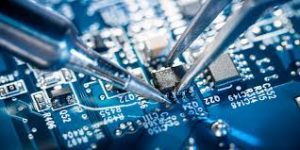cost-effectiveness of your Pcb production and assembly
Cost-effectiveness is a critical consideration in PCB (Printed Circuit Board) production and assembly, as it directly impacts the bottom line of both manufacturers and end-users. In today’s competitive market, companies are constantly seeking ways to optimize their processes and reduce costs without compromising quality. Several factors contribute to the cost-effectiveness of PCB production and assembly, including materials, manufacturing processes, automation, and economies of scale.
One of the primary drivers of cost in PCB production is the choice of materials. Selecting high-quality yet cost-effective materials is crucial for achieving the desired performance and reliability of the final product while keeping manufacturing costs in check. Manufacturers often work closely with suppliers to source materials that strike the right balance between quality and cost, leveraging bulk purchasing agreements and negotiating favorable pricing to reduce expenses.
Manufacturing processes also play a significant role in determining the cost-effectiveness of pcb production and assembly. Traditional manufacturing methods, such as through-hole assembly, can be labor-intensive and time-consuming, leading to higher production costs. In contrast, modern techniques such as surface mount technology (SMT) and automated assembly offer greater efficiency and lower labor costs, resulting in overall cost savings. By investing in advanced equipment and automation technology, manufacturers can streamline their production processes and achieve higher throughput at a lower cost per unit.

Can you discuss the cost-effectiveness of your Pcb production and assembly?
Furthermore, economies of scale are instrumental in driving down production costs in PCB manufacturing. Producing PCBs in large quantities allows manufacturers to spread fixed costs, such as equipment depreciation and overhead expenses, across a greater number of units, thereby reducing the cost per unit. Additionally, bulk purchasing of materials and components at discounted rates further enhances cost-effectiveness for large-scale production runs. Companies often strategize their production schedules to maximize economies of scale and minimize per-unit costs, aligning production volumes with market demand to optimize profitability.
Another aspect to consider is the total cost of ownership (TCO) associated with PCB production and assembly. TCO takes into account not only the upfront manufacturing costs but also factors such as maintenance, repairs, and lifecycle management over the product’s entire lifespan. By adopting a holistic approach to cost analysis, companies can identify opportunities for cost optimization throughout the product lifecycle, from design and prototyping to mass production and end-of-life disposal.
Moreover, innovations in design optimization and value engineering can contribute to cost-effectiveness in PCB production. By leveraging advanced CAD (Computer-Aided Design) software and simulation tools, designers can optimize PCB layouts for manufacturability, minimizing material waste and maximizing assembly efficiency. Value engineering involves reevaluating product specifications and component choices to achieve the desired performance at the lowest possible cost without sacrificing quality or reliability.
In conclusion, achieving cost-effectiveness in PCB production and assembly requires a multifaceted approach that encompasses materials sourcing, manufacturing processes, economies of scale, and total cost of ownership considerations. By leveraging cost-effective materials, optimizing manufacturing processes, maximizing economies of scale, and embracing design innovation, companies can drive down production costs while maintaining the highest standards of quality and reliability. Ultimately, cost-effectiveness is not just about minimizing expenses but also about maximizing value for both manufacturers and customers in a competitive market landscape.


